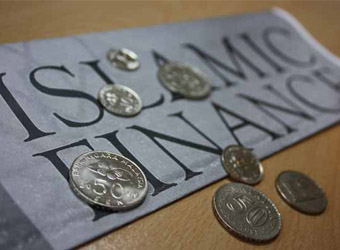Financial institutions and regulators around the world need to work together to address challenges that are limiting the geographic growth of Islamic finance, according to a key expert. David McLean, Chief Executive of the World Islamic Banking Conference: Asia Summit, which opens in Singapore next week, said that although Islamic finance has come a long way, achieving significant growth over the last decade, the overall size of Islamic assets is still less than 1 per cent of the global financial system and the industry has still to build significant economies of scale.
“Being comparatively young, Islamic finance currently offers fewer product choices for consumers, while isolated pools of Islamic liquidity in each market restrict opportunities for more efficient allocation of capital across international jurisdictions,” McLean ahead of the June 3 opening of the 4th Annual World Islamic Banking Conference: Asia Summit.
“As Islamic finance embarks on its next phase of growth, the industry must overcome these challenges and build scale, reach critical mass and expand its geographic footprint — and this will require financial institutions, regulators, and international standard setting agencies to work more closely together,” McLean stated.
More than 480 key Islamic finance leaders and senior decision-makers representing the major regional and international institutions, regulatory bodies and government agencies, are attending WIBC Asia 2013. The high-profile gathering will create an ideal platform to facilitate discussions on achieving further growth and international connectivity in the Islamic banking and finance industry in Asia.
According to Abdul Hamidy bin Abdul Hafiz, CEO of Kuwait Finance House (Malaysia), “The Islamic finance industry has shown tremendous growth in terms of business volumes, product innovation and geographical spread — as well as achieving significant improvements in its legal and regulatory frameworks. The industry is now entertaining customers across wider segments and economic sectors and is moving well beyond its early niche status.
However, the Islamic inancial system is still very small compared to the existing conventional economic system. With the lessons learnt from the recent global financial crisis, we are now well aware of the inherent dangers in unproductive capital. What is needed is a more efficient and effective mobilisation of investible surplus that promotes economic prosperity by financing real economic activities. This perfectly fits with the objectives of Islamic finance and by promoting and strengthening the cross-border connectivity in Islamic finance, it would allow capital allocation to the most efficient investment portfolios.”
He went on to say that, “The role that the annual World Islamic Banking Conference: Asia Summit plays in bringing together industry leaders from key Islamic financial centres for dialogues on improving the global connectivity of Islamic finance is commendable and we are delighted to be once again supporting this key industry gathering.” According to Sulaiman Alireza, Executive Director, Head of Direct Investments, Asiya Investments Hong Kong Limited, “There has been a significant expansion of both intra-Asia as well as cross-border trade flows between Asia and the Middle East.
Annual intra-Asia trade is expected to quadruple from current levels of almost $5 trillion to $20 trillion by 2020. Similarly, trade between the GCC and emerging Asia is growing at a rate of 25 per cent per year.” He said the emerging Asian economies, excluding Japan, account for approximately 20 per cent of the world GDP. “Middle East investors are on the lookout for greater diversification, both in terms of geographical allocation and asset classes, beyond the traditional investments in the US and Europe.”
Oman Daily Observer
